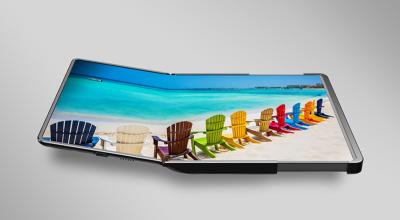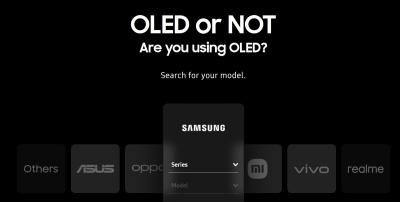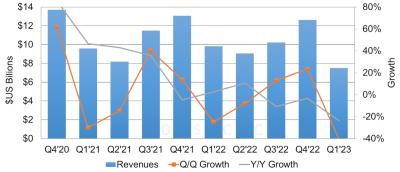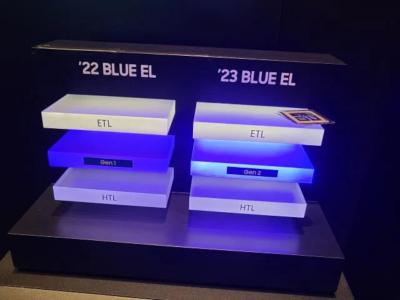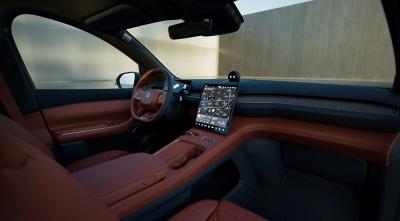OLED displays use organic materials that emit light when electricity is applied. OLEDs enable emissive, bright, thin, flexible and efficient displays - and so OLEDs are set to replace LCDs in all display applications - from small displays to large TV sets.
An AMOLED display is an OLED display that is driven by an active matrix backplane, it is a type of OLED display that can achieve high performance. Most OLED displays such as the ones used in TVs and smartphones are actually AMOLED displays.
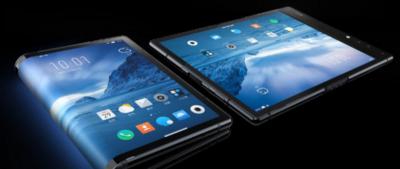
What does AMOLED mean?
The term AMOLED means Active-Matrix OLED. The 'active-matrix' part refers to the driving electronics, or the TFT layer. When you display an image, you actually display it line by line (sequentially) as you can only change one line at a time. An AMOLED uses a TFT which contains a storage capacitor which maintains the line pixel states, and so enables large size (and large resolution) displays.
AMOLEDs today
AMOLED displays today are used in many applications - and are most common in smartphones. Most smartphones today use AMOLED displays - including the latest Samsung phones, all of Apple's iPhones models and more.
AMOLED displays are also used in OLED TVs, many wearables (such as the Apple Watch), tablets, laptops, VR headsets, monitors, and more.
AMOLED vs PMOLED
A PMOLED uses a simpler kind of driver electronics - without a storage capacitor. This means that each line is turned off when you move to the next line. So let's say you have 10 rows in your display - each row will only be on 1/10 of the time. The brightness of each row has to be 10 times the brightness you'd get in an AMOLED. So you use more voltage which shortens the lifetime of the OLED materials and also results in a less efficient display. So while PMOLEDs are cheaper to make than AMOLEDs they are limited in size and resolution (the largest PMOLED is only 5", and most of them are around 1" to 3"). Most PMOLEDs are used for character display, and not to show photos or videos.
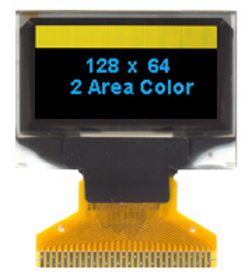
Flexible, foldable and rollable AMOLEDs
One of the main advantages of AMOLED displays is that they can be made flexible. Flexible AMOLEDs are already popular for many years in smartphones and wearables, and in 2019 we will experience the first foldable devices and rollable screens.
Looking to buy AMOLED displays?
Are you looking to buy AMOLED display for your project? AMOLEDs on the market range from small 1-inch ones for smartwatches through large OLEDs used in tablets and laptops - to large TV panels, up to 97" in size. Visit our OLED Marketplace, the world's most comprehensive OLED catalog, where you can browse the available panels, and let us help you find the best AMOLED supplier for your needs!
Further reading
The latest AMOLED news:
Samsung launches a website that tells you whether your smartphone has an OLED made by SDC
Samsung Display launched a new web site, called OLED Finder, in which you can choose your phone model to see whether it uses an OLED produced by Samsung Display.
This is a marketing play by SDC, that aims to establish the superiority of Samsung's own OLED panels, over competing panels made by LGD, BOE, Visionox, etc. The website does not include all phones though that use OLED displays - for example it does not include any of Apple's iPhones.
Reports from Korea suggest that BOE is facing technical challenges as it struggles to become an OLED supplier for Apple's iPhone 15
According to reports from Korea, BOE is developing smartphone OLED displays for Apple's iPhone 15 range, but it is facing technical hurdles.

Specifically, the iPhone 15 design has a camera (and FaceID sensors) punch-hole inside the OLED, and BOE's panel suffer from light leakage from the OLED into the camera hole area.
Sony starts shipping its PlayStation VR2 OLED VR gaming headset
Sony's long-awaited second-gen VR headset, the PlayStation VR2, is finally shipping. Sony is offering the new headset for $549.99 in the US, and it is also available globally.
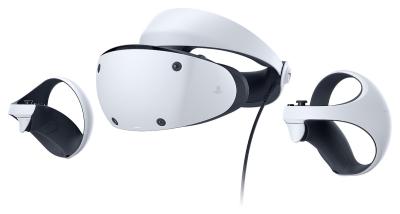
The PlayStation VR2 is based on dual 120fps 2000x2040 OLED displays that provide a 110-degree FOV. This is the first major VR headset based on AMOLED displays for a long time.
DSCC says demand for smartphone and TV OLED displays will decline by 24% in the next quarter
DSCC says that OLED panel revenues were $12.6 billion in Q4 2022, down 3% from Q4 2021. Shipments declined by 7% compared to last year.
For the full year 2022, revenues reached $41.7 billion, a 1% decrease from 2021. AMOLED for smartphones shipments (units) decreased by 1%, while OLED TV panel shipments decreased by 9%. Some OLED segments grew in 2022 - AR/RV, automotive, monitors, and tablets.
ETNews: Apple signs contracts to develop tablet and laptop OLEDs, gets ready for the first OLED iPad in 2024
Korea-based ETNews reports that Apple has finally committed to adopt OLED displays in future tablets and laptops, and the company has signed a contact with a "local OLED developer" (which means either Samsung Display or LG Dispaly) to develop four different OLED displays.
According to the report, Apple decided to adopt a 10.86" and 12.9" AMOLED displays for future iPad devices, and 14" and 16" displays for future MacBooks. The first OLED iPad will be released in 2024, while the first OLED MacBook will come later in 2026.
Samsung asks the ITC to ban the import of aftermarket AMOLED smartphone displays into the US
According to reports, Samsung Display has appealed to the US ITC asking to ban aftermarket and refurbished AMOLED displays from entering the US.

Today it is possible to repair a smartphone display and replace the screen - and there are companies (mostly independent outlets) that offer lower cost displays - which could refurbished ones, aftermarket imports - or even lower cost alternatives produced by other makers. If the ITC approves Samsung's request, these will not be available anymore, and only original Samsung AMOLED displays will be allowed.
Samsung introduces new low-blue-light AMOLED displays
Samsung has demonstrated new AMOLED display panels that offer a lower blue-light emission compared to its current low-blue-light AMOLEDs. Samsung says that the new display reduces blue light emission by 70% compared to 'conventional' displays (which probably means LCD displays, not standard AMOLEDs).
Samsung brands these new displays as Gen-2 LBL (low-blue-light) AMOLEDs, and says that the lower blue light emission was achieved by a combination of the latest OLED emitter materials and advanced AI software. Samsung is mostly targeting laptop displays, saying that the new Gen-2 LBL displays can achieve a brightness of up to 2,000 nits. Samsung will start producing Gen-2 LBL AMOLEDs by the end of 2023.
According to Ming-Chi Kuo, Apple plans to release its first OLED laptop in 2024
Respected Apple analyst Ming-Chi Kuo says that according to his sources, Apple is aiming to release an OLED MacBook in 2024.
Apple is already using OLED displays in its smartphones and wearables, and it used to have MacBook Pro powered by an OLED touchbar back in 2016. We know that Apple is aiming to move to OLED displays in its tablets and laptops, so this 'rumor' is not a surprise, but it remains to be seen if Apple's OLED laptops will indeed come as soon as next year.
Nio unveil two new EV SUVs, both with 12.8" AMOLED infotainment displays
China-based EV car maker Nio unveiled two new SUVs, the EC7 and ES8 Prime, and both of them have a large 12.8" infotainment AMOLED touch display. The EC7 is a new coupe SUV, while the ES8 Prime is refresh to Nio's existing six-seater SUV.
The two new cars also adopt several new technologies (such as new LIDAR sensors, electrochromatic panoramic glass room and more) and adopt many new aerodynamic improvement to increase the driving range.
Samsung set to demonstrate a foldable and slidable AMOLED display
According to a report from Korea, Samsung Display will unveil a new display at CES 2023, which is both foldable and slidable. The display is 8-inch in size when folded, opens up to a 10" display when unfolded, and then can be slided further to 12.4".
The display will be shown in a private booth, which will not be open to the public. It is likely that this display is still at an early stage of development, as there are many challenges such as durability and quality that Samsung will need to overcome. The report suggests, though, that Samsung is ready to soon commercialize such a panel.
Pagination
- Previous page
- Page 4
- Next page

